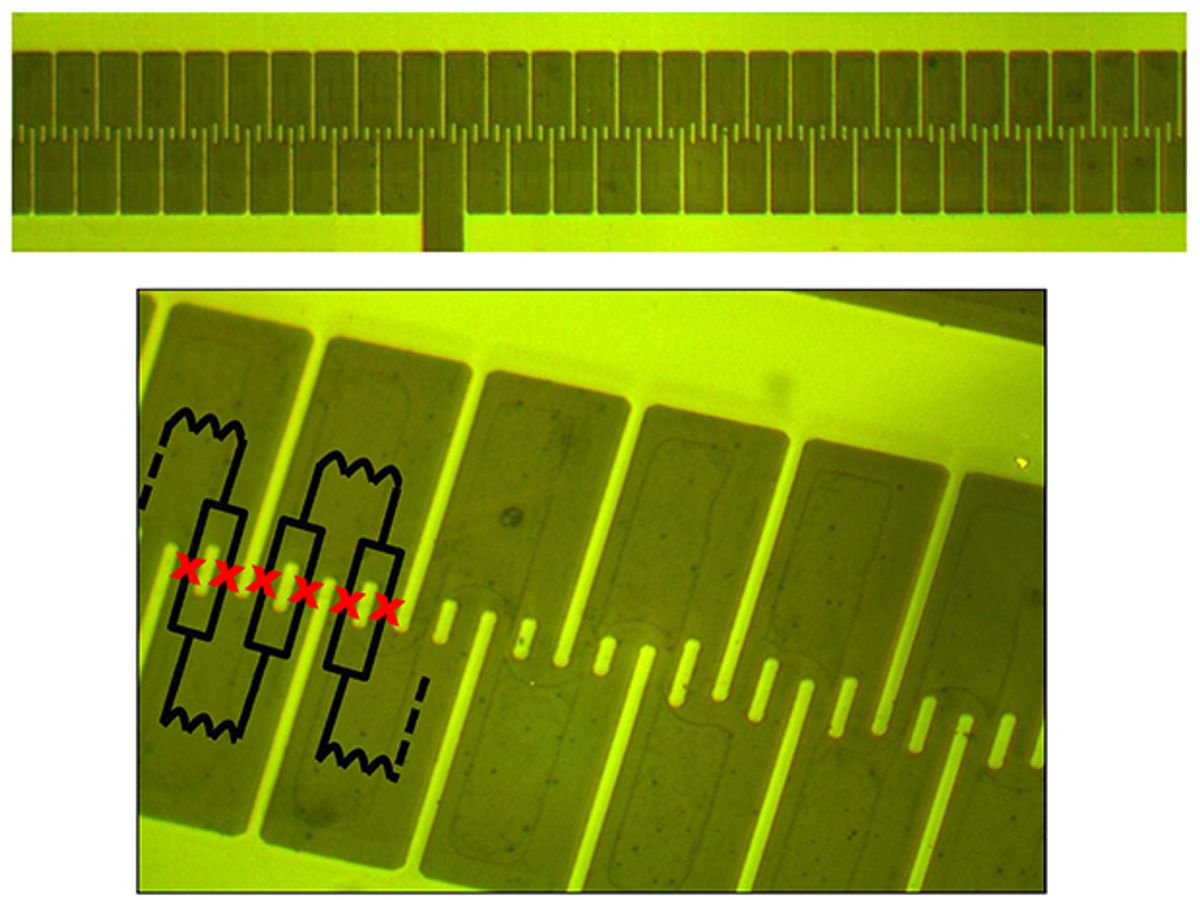Newly developed magnetic sensors not only perform better than most standard commercial devices, but also can operate at temperatures well above absolute zero, say UK researchers.
Superconducting quantum interference devices, or SQUIDs, can detect minute magnetic fields, making them useful for applications such as analyzing brain activity, medical imaging, and oil prospecting. SQUIDs work by converting magnetic flux—a measure of magnetic intensity—into a voltage.
The most sensitive commercial magnetic sensors are single SQUIDs that need to be kept at 4.2 Kelvin. Such incredibly cold temperatures, within a hair’s breadth of absolute zero, require expensive and difficult to handle liquid helium.
Now physicists at Loughborough University and Nottingham University, both in the United Kingdom, have developed a multi-SQUID magnetic sensor that can operate at 77 K, the boiling temperature of liquid nitrogen, a much cheaper refrigerant. And this array of squids they created outperforms most standard 4.2 K single SQUID magnetometers. They detailed their findings in the 20 October online edition of the journal Applied Physics Letters.
Their device incorporates anywhere from 480 to 770 SQUIDS. Engineers were aware that large arrays outperform a single low-temperature SQUID because with greater numbers comes increased sensitivity and less noise.
But these SQUID arrays work only if all the SQUIDs experience the same magnetic flux—a state known as flux coherency—and the interactions between individual SQUIDs are minimized. These are both difficult requirements that limited previous arrays to roughly 30 SQUIDs.
This recent advance was accomplished using flux focusers, which are large patches of superconductor that can improve flux coherency and reduce interactions between SQUIDs. Previous SQUID arrays either did not have flux focusers or had ones so large that they left little room for additional SQUIDs to be integrated together on a single chip. The new design uses long, narrow flux focusers to string together an arbitrarily long series of SQUIDs.
The scientists are now working on optimizing the shape and design of their SQUID arrays to maximize their sensitivity.
Charles Q. Choi is a science reporter who contributes regularly to IEEE Spectrum. He has written for Scientific American, The New York Times, Wired, and Science, among others.



